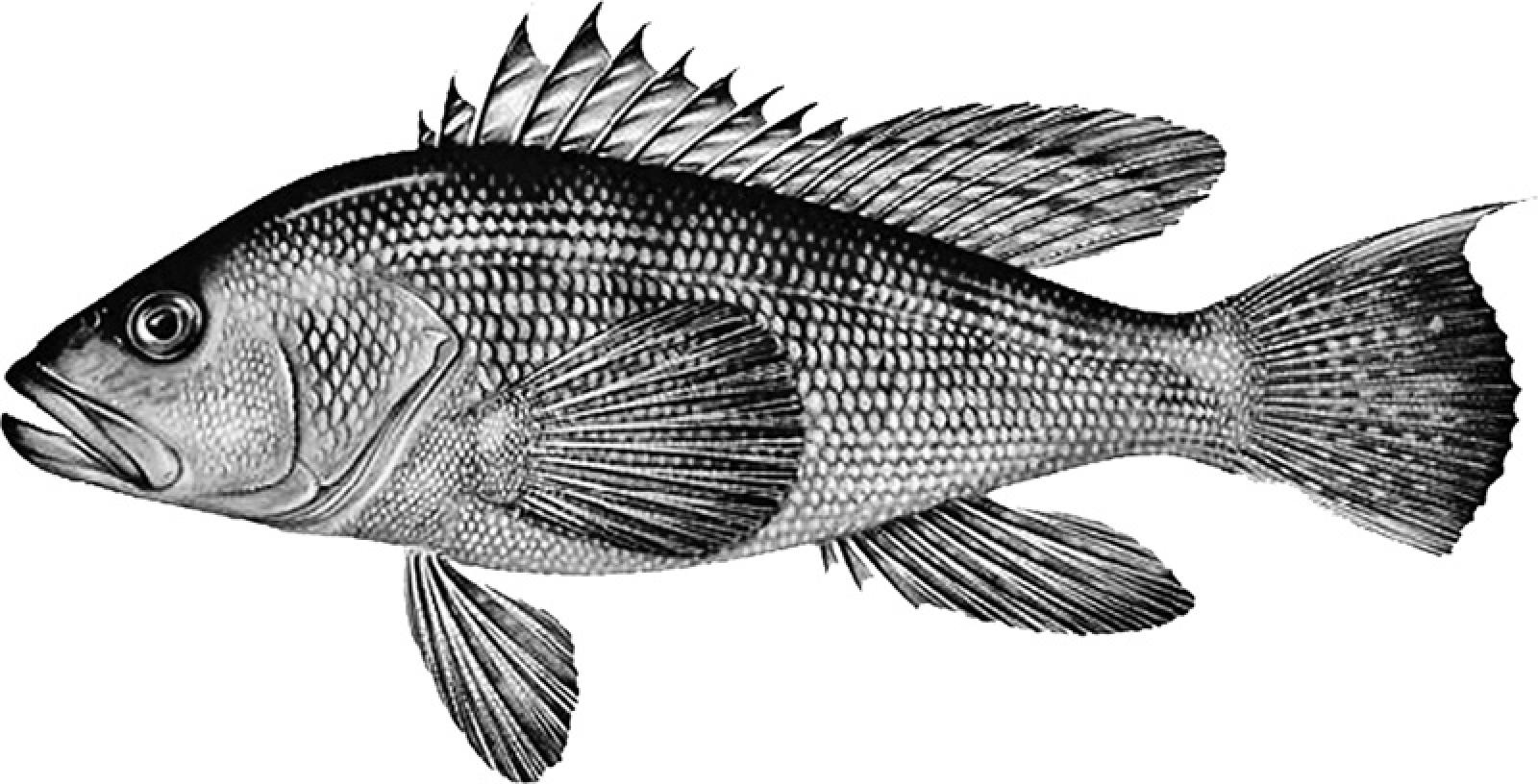“Let there be bass.”
Those words, spoken by Leo Fender, American inventor and manufacturer of electric guitars, were not likely referring to fish. However, I might have uttered the same sentiments last week when a glorious gift of beautiful bass was bestowed on me for a planned birthday dinner. My bounty was black sea bass, and it was truly delicious when sautéed and made into fish cakes.
But, don’t ask for the recipe, as I don’t know it.
The chef in my house shares the same secretive nature of a well-known television cooking show personality. American chef Alex Guarnaschelli, of Iron Chef and Chopped, was just as guarded about her sea bass recipe as was my husband. She balked when asked for the technique: “I don’t just show anyone how to crust a sea bass,” she said. “That’s sacred information.”
No matter how divine the recipe or the result, black sea bass has my vote as a favorite fish for both its culinary qualities and interesting natural history. Black bass, Centropristis striata, is found in waters along the East Coast. Call it rock bass, tallywag, pin bass, or black harry, but don’t call it late for dinner. This fine fish is a bottom dweller that can be found floundering among rocks, reefs, wrecks, jetties, piers and other sunken structures.
Neither long-lived nor large, sea bass can grow to eight pounds and survive through age 10. Of course, there are extremes, with the record for size just over 10 pounds and the record for longevity just over 20 years.
As is often true, it is its sex that is perhaps this fish’s most interesting trait. Black sea bass are protogynous (also called sequential) hermaphrodites. This means that a single fish’s sex is on a spectrum and will change over time, in a way that correlates with its age and size.
Young, small fish are female. They will grow and mature and lay eggs by the time they are seven and a half inches. Shortly after maturation, most female fish will transition to males. This can take a few years, but by age five most females have become male. Thus, to determine the sex of this fish, one can look at age or size. Smaller fish will be female and larger ones likely males. With this pattern of development, this fish (if human) would find it impossible to serve in our military under the current regime after its transition.
Color is another conundrum for this fish. The adults are bluish black, with the males also having a blue/green tint around the eye and on the head, though once out of the water, the color fades to black. Juvenile fish also go through four-color phases as they grow.
Both this fish and myself are considered opportunistic feeders, meaning we eat whatever comes our way. For sea bass, this includes shrimps, crabs, worms, small fish, squid and clams. For me, it is the bass, clams and garden veggies that I am lucky enough to receive.
I am thankful for my food and for the friends and fishers that provide it. As someone once said, good things come to those who bait.
Suzan Bellincampi is director of the Felix Neck Wildlife Sanctuary in Edgartown, and author of Martha’s Vineyard: A Field Guide to Island Nature.







Comments
Comment policy »